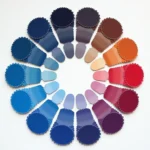Ever looked up at the night sky and wondered about the colors of those distant worlds? We often see planets depicted in vibrant hues, but how accurate are these representations? Let’s take a journey through our solar system and discover the true colors of each planet.
The Sun’s Influence on Planetary Color
Before diving into individual planets, it’s important to understand the role our sun plays in how we perceive color. The sun emits light across the entire visible spectrum, which we see as white light. When this light hits an object, like a planet, some wavelengths are absorbed, while others are reflected. The reflected wavelengths are what our eyes perceive as color.
Inner Rocky Planets
Mercury: A Dusty Gray World
Mercury, the smallest and closest planet to the sun, lacks a substantial atmosphere to scatter light. This results in a surface that reflects light much like our moon – a dull, grayish color.
 Surface of Mercury
Surface of Mercury
Venus: A Swirling Yellowish-White
Despite being often referred to as Earth’s twin, Venus presents a drastically different appearance. Its dense atmosphere, composed primarily of carbon dioxide, shrouds the planet in a thick layer of clouds. These clouds reflect sunlight remarkably well, giving Venus its brilliant yellowish-white appearance.
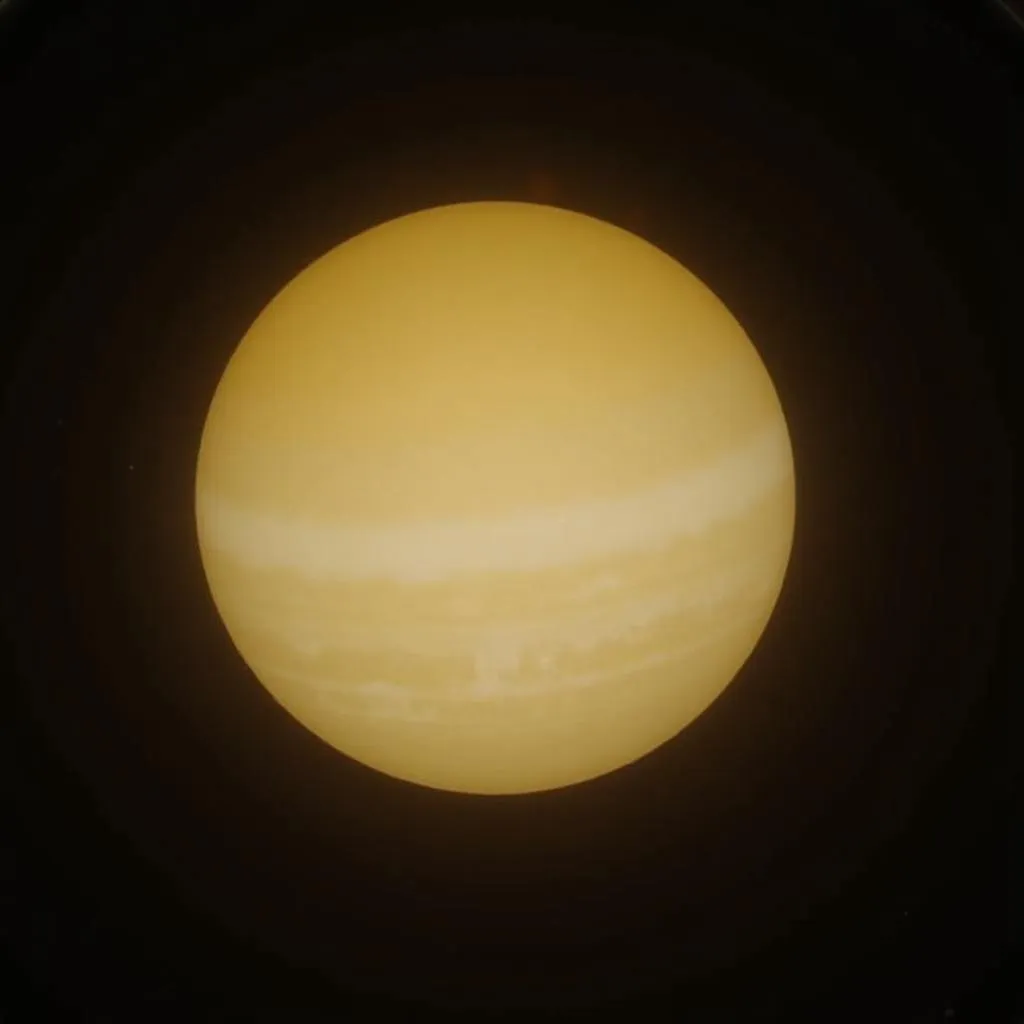 Venus with its thick clouds
Venus with its thick clouds
Earth: The Blue Planet
Our home planet earns its nickname “The Blue Planet” from the vast oceans covering its surface. Water absorbs red and green light more readily, reflecting blue light back into space. Additionally, our atmosphere contributes to the blue hues by scattering sunlight.
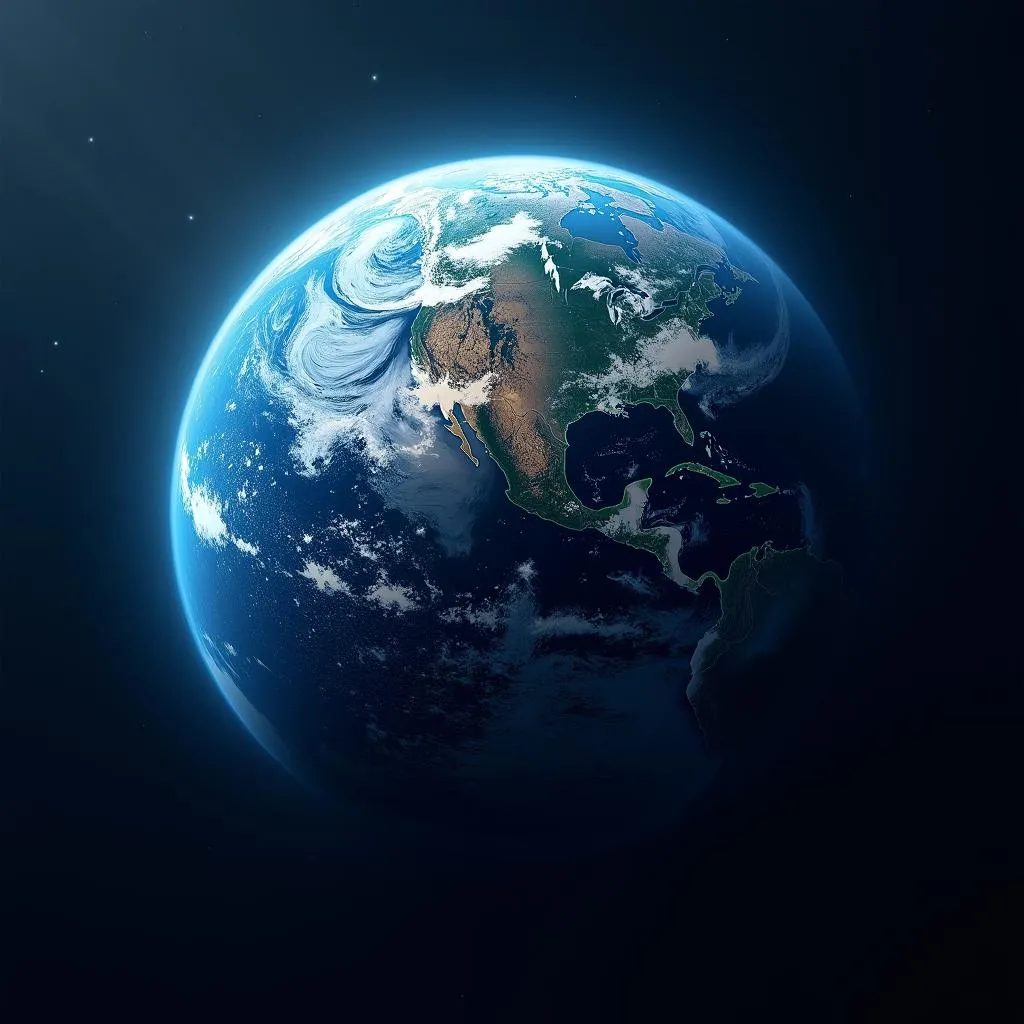 Earth seen from space
Earth seen from space
Mars: The Red Planet
Mars is often called “The Red Planet” for good reason. Its surface is rich in iron oxide – the same compound that gives rust its reddish hue. This iron oxide dust covers much of Mars, giving it a distinctive red-orange appearance.
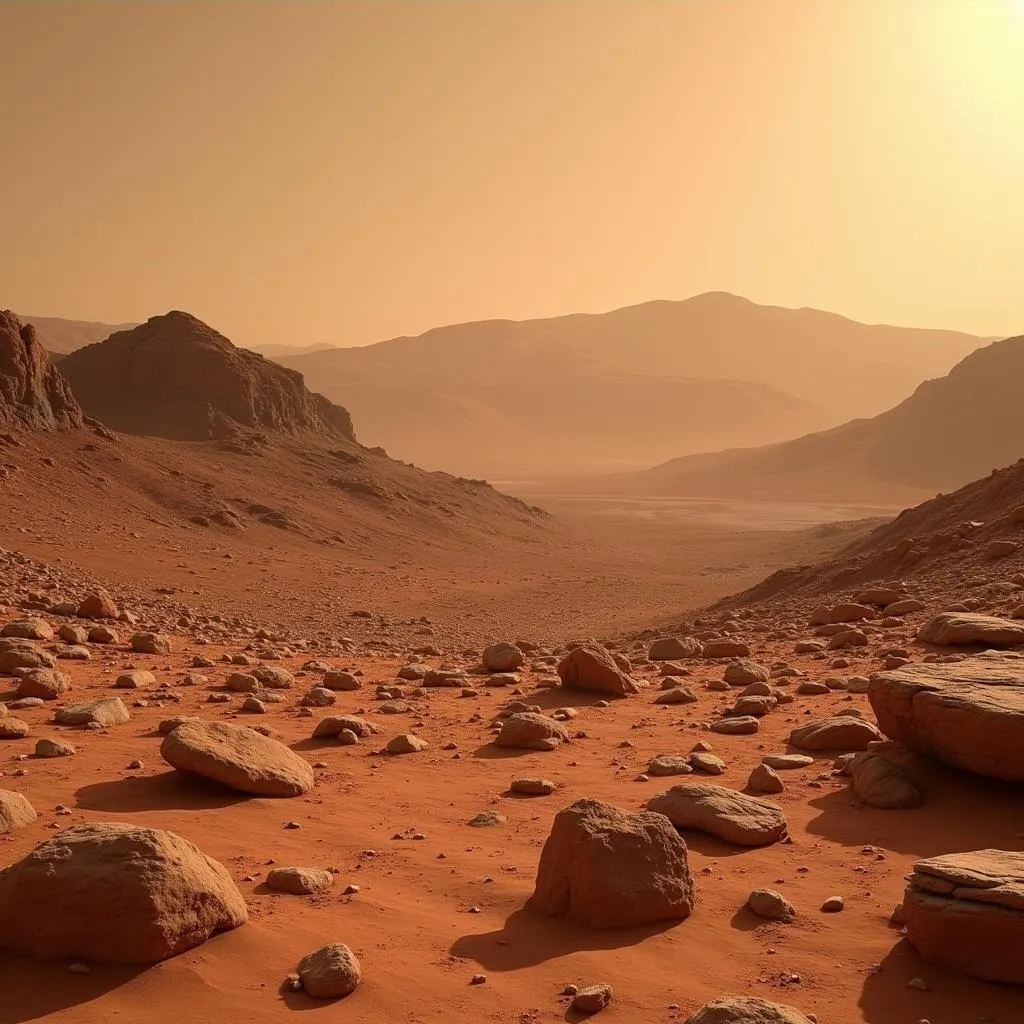 Martian Landscape
Martian Landscape
Outer Gas Giants
Jupiter: A Tapestry of Orange and White Bands
Jupiter, the largest planet in our solar system, is a swirling spectacle of orange and white bands. These bands are caused by different layers of clouds composed of ammonia ice, water vapor, and other compounds. The Great Red Spot, a giant storm larger than Earth, adds another splash of color to Jupiter’s dynamic atmosphere.
 Jupiter with its Great Red Spot
Jupiter with its Great Red Spot
Saturn: A Pale Yellow with Hints of Orange
Similar to Jupiter, Saturn boasts a gaseous atmosphere with bands of clouds. However, Saturn’s clouds are less distinct and appear paler due to a thicker layer of haze higher in its atmosphere. The overall effect is a pale yellow hue with subtle hints of orange.
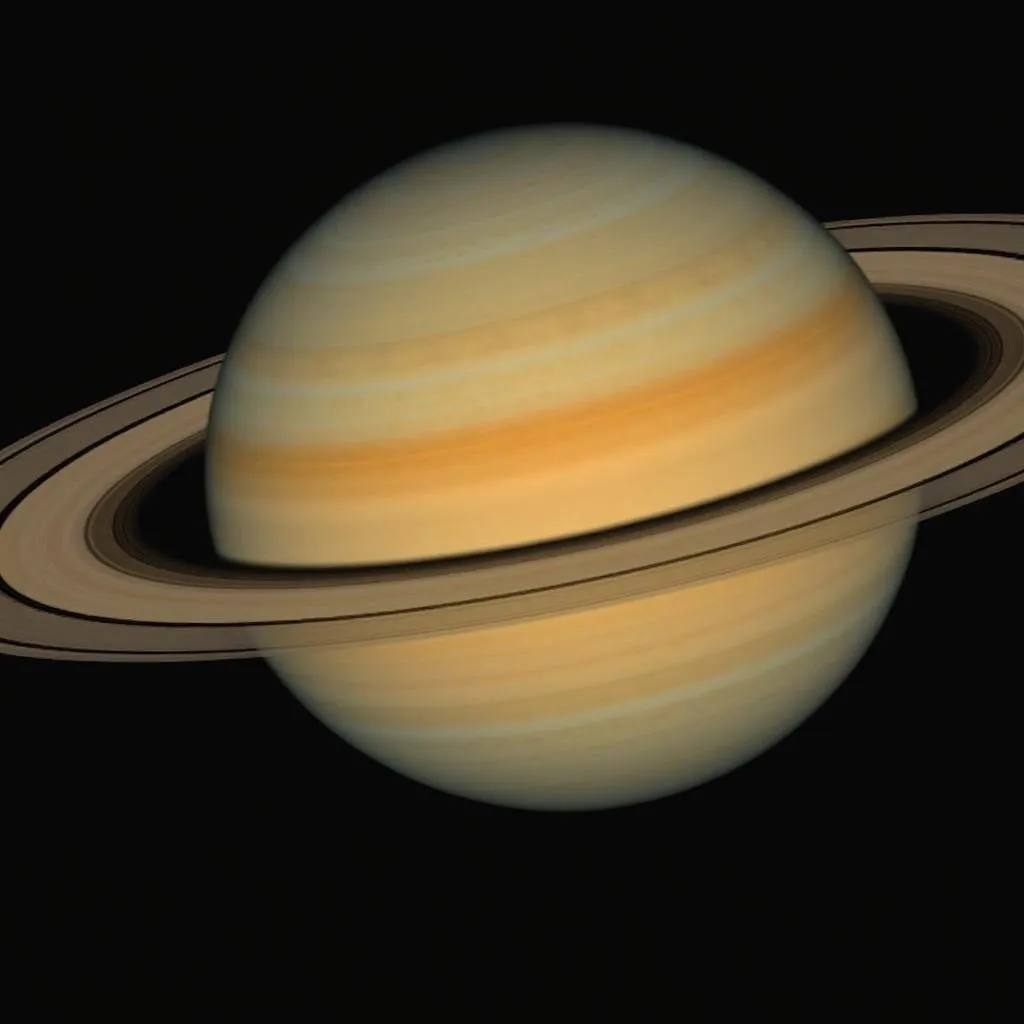 Saturn with its rings
Saturn with its rings
Uranus: An Icy Blue-Green
Uranus gets its striking blue-green color from methane gas in its upper atmosphere. Methane absorbs red light from the sun, reflecting blue and green wavelengths back into space. This gives Uranus its serene, icy appearance.
 Close-up of Uranus
Close-up of Uranus
Neptune: A Deeper Shade of Blue
Neptune shares a similar atmospheric composition with Uranus, containing a high concentration of methane. However, Neptune appears a deeper shade of blue, possibly due to the presence of other unknown atmospheric components. Like Uranus, Neptune also has a serene, icy appearance.
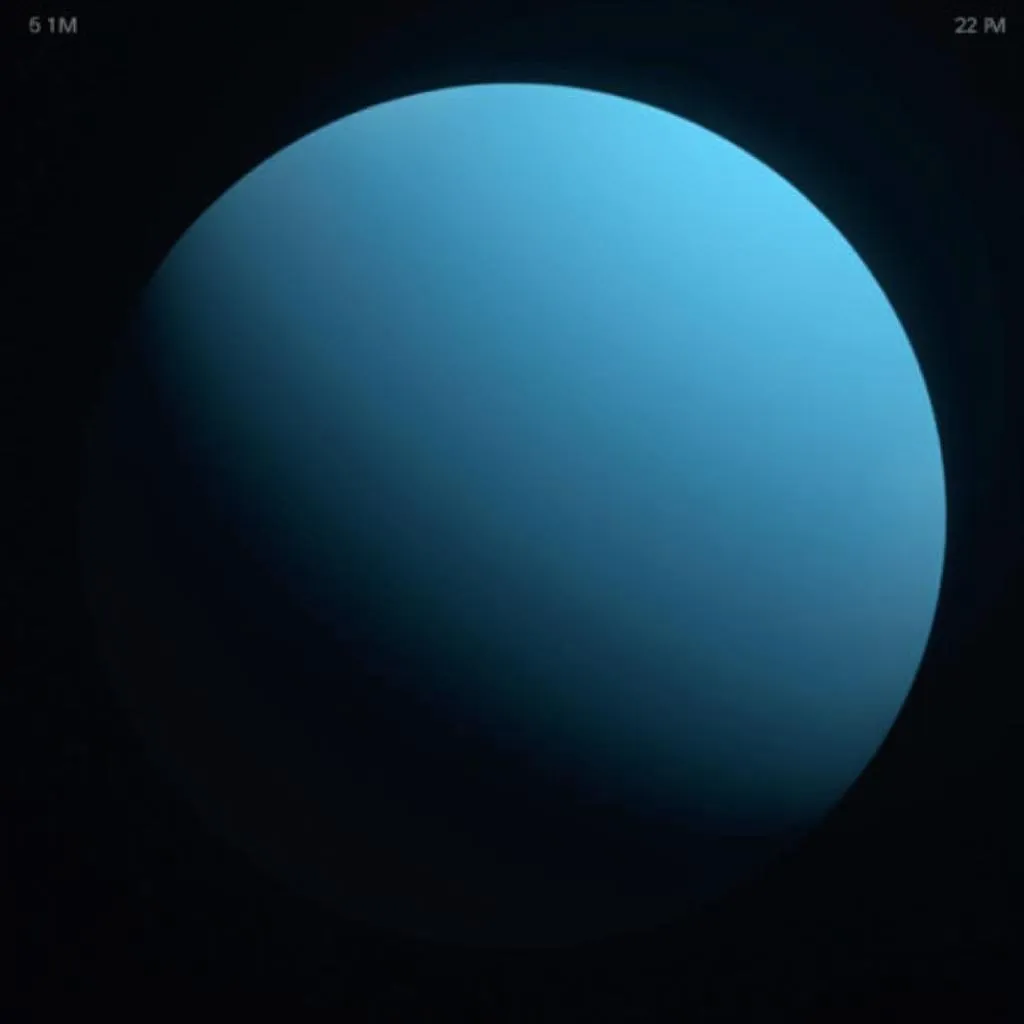 Neptune in space
Neptune in space
Beyond the Visible Spectrum
While we’ve explored the colors of our planets as seen by the human eye, it’s fascinating to note that they emit light in other wavelengths beyond our visible range. Infrared telescopes, for example, can detect heat radiation from planets, revealing further information about their compositions and atmospheric properties.
Conclusion
From the rusty reds of Mars to the serene blues of Uranus and Neptune, the planets in our solar system offer a breathtaking display of color. Understanding the factors that contribute to these colors deepens our appreciation for the beauty and diversity of our cosmic neighborhood. So, next time you gaze up at the night sky, remember the vibrant hues that paint these distant worlds.
Need help transforming your own living spaces with color? Contact Color Box Hanoi at 0373298888, email us at [email protected], or visit our showroom at 86 Cầu Giấy, Hà Nội. We’re here 24/7 to help you create a home that reflects your unique style.

